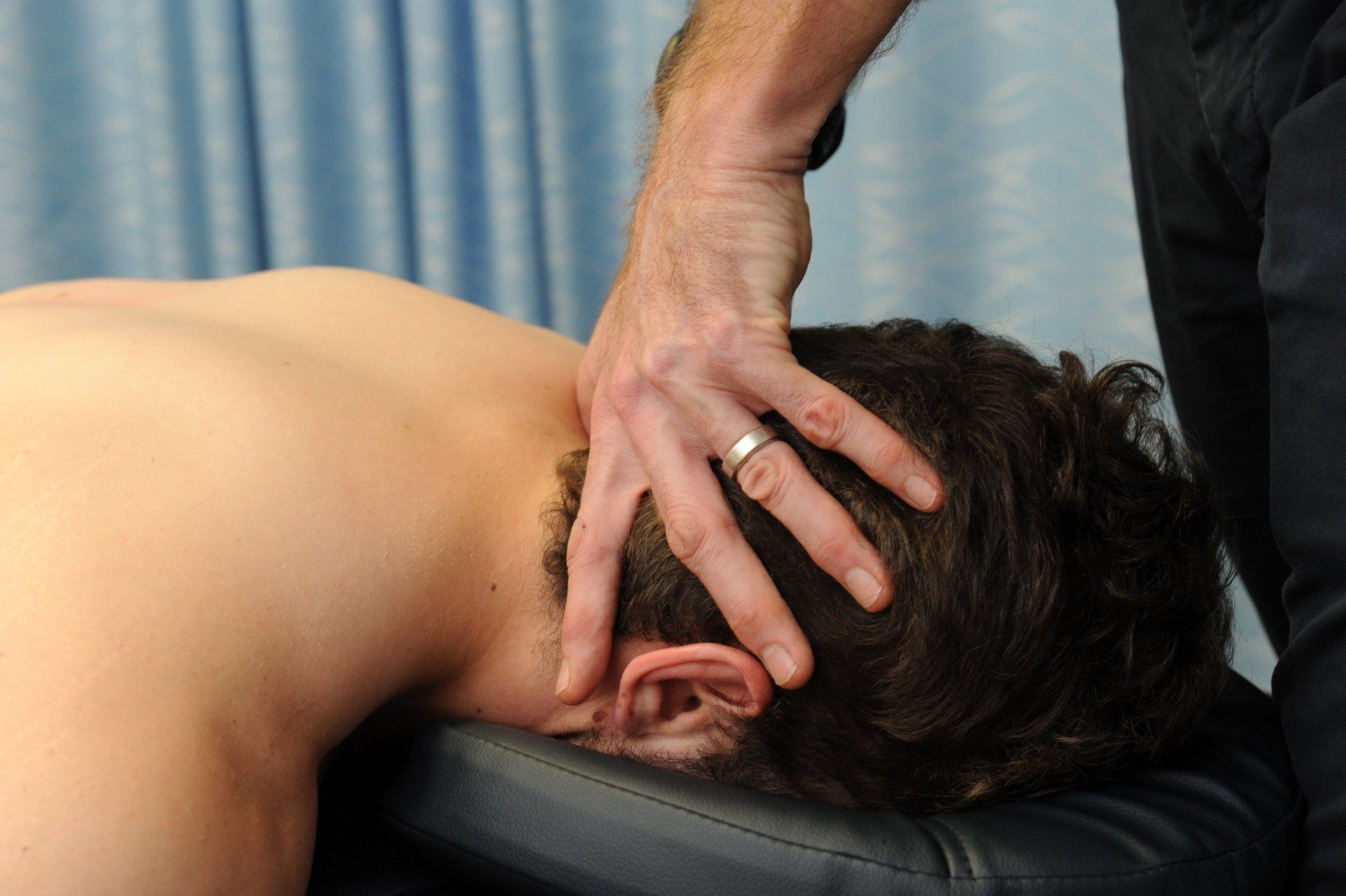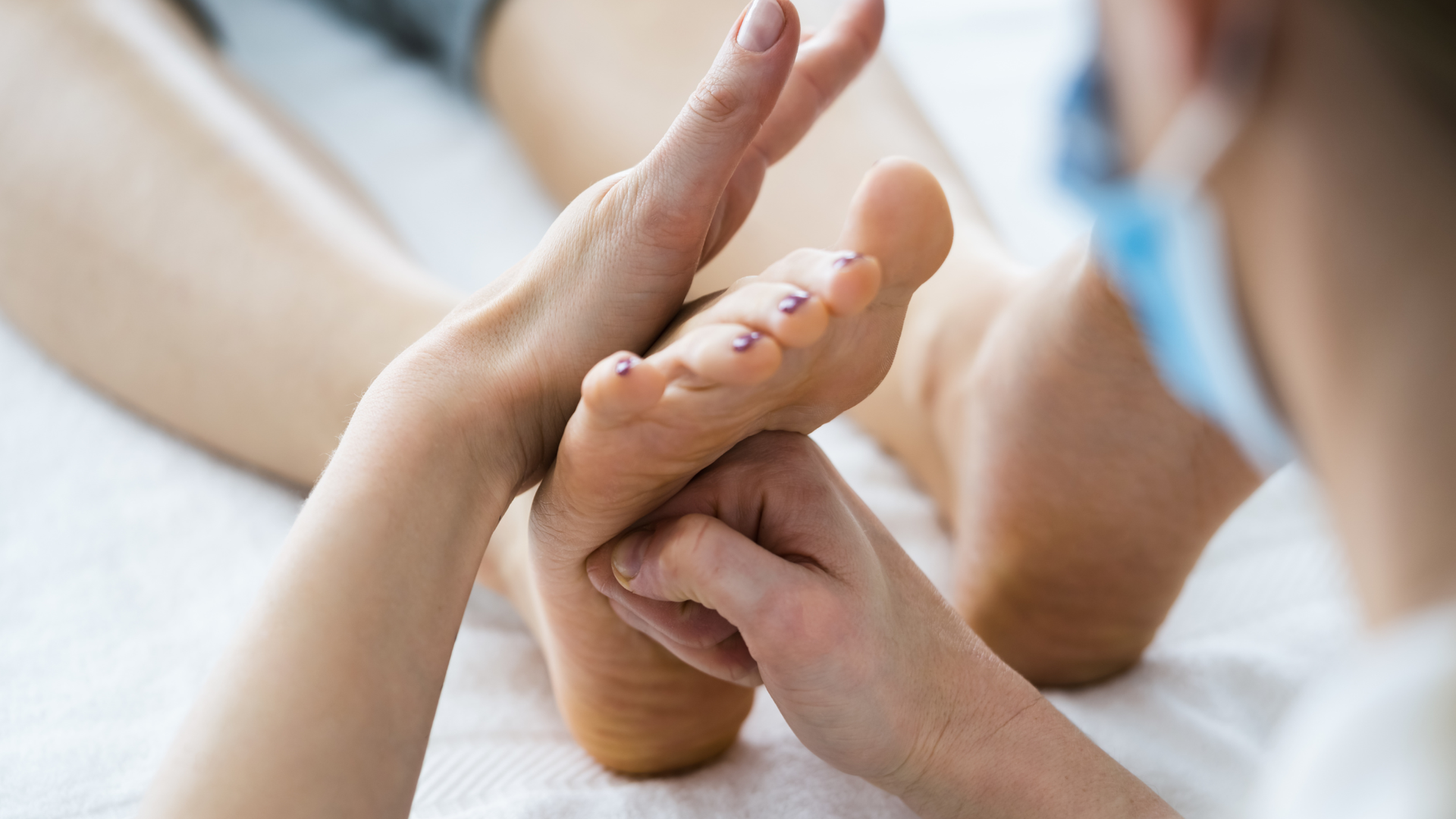Wrist - Carpal Tunnel Syndrome
Numbness and weakness in the hand are common signs of carpal tunnel syndrome.

“A burning, cramping feeling in my elbow and wrist, and numbness in two fingers”.
That’s how one patient described her early experience with Carpal tunnel syndrome (CTS), an entrapment neuropathy caused by compression of the median nerve as it travels through the carpal tunnel. It is the most common nerve compression disorder in the general population, accounting for 90% of all neuropathies, and is characterised by wrist and hand pain, numbness, pins and needles, and weakness.
Anatomy 101
The carpal tunnel is a narrow, rigid structure in the wrist formed by the carpal bones and a strong ligament called the transverse carpal ligament. The primary role of the carpal tunnel is to protect the median nerve and flexor tendons that pass through it. The median nerve is responsible for providing sensation to the thumb, index, and middle fingers and controlling the muscles at the base of the thumb. Due to its confined space, the carpal tunnel is susceptible to compression or entrapment, leading to carpal tunnel syndrome. You can see the anatomy of the carpal tunnel here.
The carpal tunnel maintains a relatively constant tissue fluid pressure level of between 2.5 and 13mmHg. Under some conditions, the pressure can exceed normal health levels, impeding blood flow and nerve conduction, and causing nerve dysfunction, swelling, and scarring.
Who gets it?
CTS affects approximately 3-6% of the adult population, with females impacted at 3 times the rate of men.
The majority of CTS cases are chronic and idiopathic, meaning that there is no known cause for the symptoms.
There are some known risk factors for CTS, being:
- Female gender (with peak occurrence between 45-54 years of age)
- Increasing age
- Obesity
- Thyroid disease
- Diabetes
- Pregnancy
With regards to repetitive stress/strain, the literature does show some association between CTS and the use of vibratory tools, repetitive wrist flexion and extension, and repetitive loading through the hand.
Acute CTS is less common and is usually the result of associated trauma resulting in acute swelling or haematoma formation in the carpal tunnel. Atraumatic causes include septic arthritis, soft tissue infections, and calcifying tendinitis. Acute presentations should be treated urgently at the nearest hospital or medical facility.
Diagnosing carpal tunnel syndrome
CTS can often be diagnosed in the clinical setting by a trained medical professional. A thorough medical history will assist with identifying symptoms associated with CTS including:
- Duration and location of symptoms;
- Timing of symptoms (symptoms increasing at night, for example);
- Functional impact (reduced grip strength, difficulty driving), and;
- Presence of known risk factors (eg. pregnancy, diabetes, rheumatoid arthritis).
A physical examination will assess for signs of CTS, including muscle wasting, reduced grip strength, sensor examination and some special tests such as Tinel’s sign and Phalen’s manoeuvre to assess nerve irritation.
Nerve conduction studies or electromyography may be necessary to confirm the diagnosis and should be performed if surgery is being considered. These studies measure the strength and speed of impulses propagated down the length of a peripheral nerve and are usually reduced in CTS.
Conditions that may present similarly to CTS and should be ruled out during the assessment process include:
- Other median nerve entrapments syndromes
- Pronator teres syndrome
- Arthritis
- Nerve root compression at the neck level.
Do I need a scan?
Imaging studies like X-rays, MRIs, or ultrasounds are not typically required for CTS diagnosis. However, they may be utilized if other conditions need to be ruled out or if conservative treatments fail to provide relief. Your physiotherapist can advise you on this and even refer you for some scans where indicated.
How do I fix it?
For mild to moderate cases and those CTS cases suggestive of the possibility of remission (such as with pregnancy-related CTS), evidence-based treatment often starts with conservative approaches, including activity modification and wrist splinting. Physiotherapy techniques, such as soft tissue therapy, manual therapy, nerve gliding exercises, and graded functional strength and conditioning, can help alleviate symptoms and prevent recurrence.
In chronic, persistent cases, CTS symptoms typically escalate over the longer-term despite conservative treatment, and more invasive treatment approaches are often required. These might include corticosteroid injections for temporary relief of pain and paraesthesia, and/or surgical release to decompress the median nerve (see below). Alternative therapies, such as acupuncture or shockwave therapy, and oral anti-inflammatory medications have limited evidence supporting their effectiveness in the management of CTS.
How long is it going to take?
The prognosis for CTS varies depending on factors such as the severity, duration of symptoms, and the patient's commitment to treatment. Early diagnosis and intervention is paramount. Kaplan et al identified 5 factors that contributed to non-operative outcomes:
- Age over 50
- Duration of symptoms > 10 years
- Constant paraesthesia
- Stenosing flexor tenosynovitis
- Positive Phalen’s test in < 30secs
Patients with two or less of these factors had a greater than 83% chance of a successful outcome with conservative management. This reduced to 7% if three factors were present and to 0% if four or more were present. For these presentations, surgery should be considered.
Will I need surgery?
Surgery is usually reserved for recalcitrant cases and/or severe symptoms and involves release of the transverse carpal ligament. This relieves pressure within the carpal tunnel and decompresses the median nerve. Surgery can be performed using an open approach or endoscopically, with long term outcomes similar regardless of the approach.
Following surgery, physiotherapy is strongly recommended to assist with regaining wrist and hand strength, normalising median nerve mobility and restoring normal upper limb function.
The Take Home
Carpal tunnel syndrome is a common, disabling condition affecting the hand and wrist. In mild and moderate cases, early intervention and a comprehensive treatment plan, including physiotherapy and lifestyle modifications, are crucial for managing symptoms and preventing recurrence. Many cases will progress to requiring surgical release to manage symptoms and restore normal nerve function. Optimal functional outcomes can be achieved with a multi-disciplinary healthcare approach involving your doctor, physiotherapist and surgeon.
Do you have pain or tingling in your wrist and hand? Concerned you might have carpal tunnel syndrome?
Give us a call on 08 8945 3799 or book an appointment online.
We love wrist and hand problems and we love helping people with all sorts of wrist problems get back to doing what they enjoy most.
Sources
- American Academy of Orthopaedic Surgeons. (2016). Management of carpal tunnel syndrome evidence-based clinical practice guideline. Retrieved from https://www.aaos.org/globalassets/quality-and-practice-resources/carpal-tunnel/carpal_tunnel_syndrome_cpg_10.31.16.pdf
- Atroshi, I., Gummesson, C., Johnsson, R., Ornstein, E., Ranstam, J., & Rosén, I. (1999). Prevalence of carpal tunnel syndrome in a general population. JAMA, 282(2), 153-158.
- Bland, J. D. (2007). Carpal tunnel syndrome. BMJ, 335(7615), 343-346.
- Huisstede, B. M., Hoogvliet, P., Rands, dorp, C. S., & Glerum, S. (2010). Carpal tunnel syndrome. Part I: effectiveness of nonsurgical treatments—a systematic review. Archives of Physical Medicine and Rehabilitation, 91(7), 981-1004.
- Kaplan, S. J., Glickel, S. Z., & Eaton, R. G. (1990). Predictive factors in the non-surgical treatment of carpal tunnel syndrome. The Journal of Hand Surgery: British & European Volume, 15(1), 106-108.
- Ostergaard, P. J., Meyer, M. A., & Earp, B. E. (2020). Non-operative treatment of carpal tunnel syndrome. Current reviews in musculoskeletal medicine, 13, 141-147.
- Padua, L., Coraci, D., Erra, C., Pazzaglia, C., Paolasso, I., Loreti, C., ... & Hobson-Webb, L. D. (2016). Carpal tunnel syndrome: clinical features, diagnosis, and management. The Lancet Neurology, 15(12), 1273-1284.
- Sevy JO, Varacallo M. Carpal Tunnel Syndrome. 2022 Sep 5. In: StatPearls [Internet]. Treasure Island (FL): StatPearls Publishing; 2023 Jan–. PMID: 28846321.
- Zimmerman M, Gottsäter A, Dahlin LB. Carpal Tunnel Syndrome and Diabetes—A Comprehensive Review. Journal of Clinical Medicine. 2022; 11(6):1674. https://doi.org/10.3390/jcm11061674








